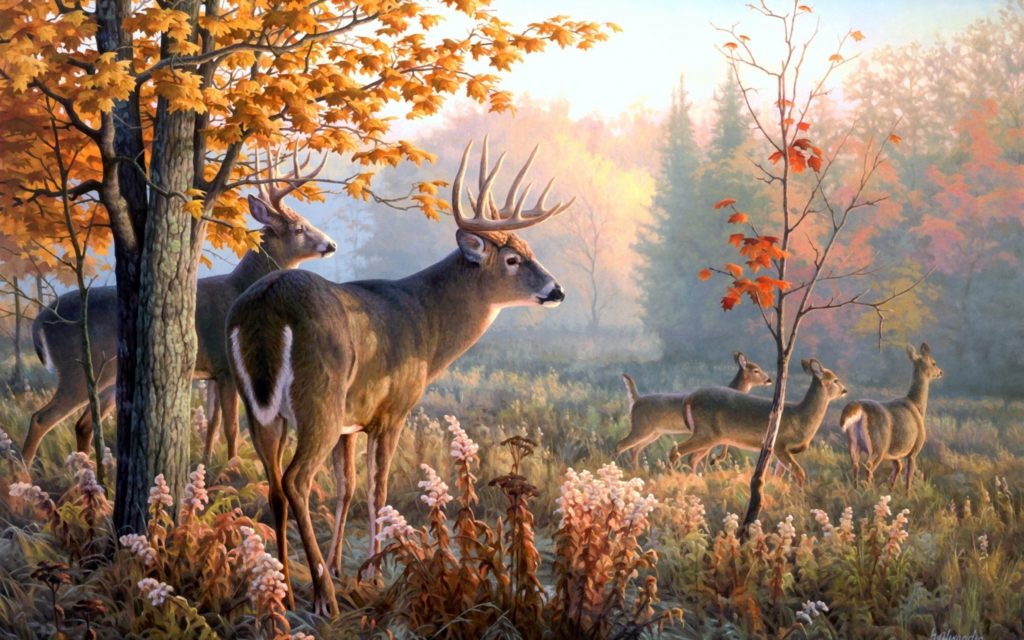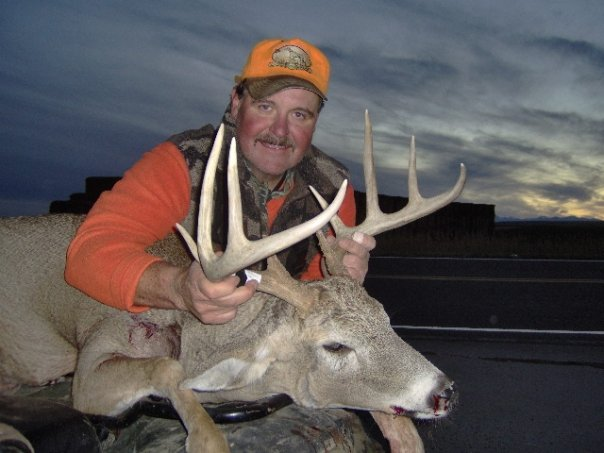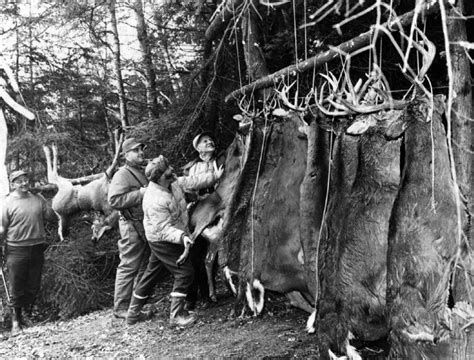18 Apr HOW MANY DEER ARE ENOUGH?
Deer numbers are always on a hunter’s mind. We have all had those days where we saw dozens of deer but no legal shooters. Of course, Big Bucks are on every hunter’s minds. We often cannot sleep because of dreaming about great herds of Big Bucks!

The best advice I ever had as a deer hunter was to take the first legal critter that God sends your way. Over the course of a lifetime you can expect to harvest some trophies and always fill the freezer. Every opening day became an annual ritual and opportunity to tag another deer.
One year I drew a doe tag and spent the week scoping big bucks! I never had a single doe in range. What the heck? Buck only areas can produce similar outcomes. Deer herds need to be balanced, healthy, and hearty. Many eastern forests have a 25 does to one buck ratio. Hunters want to see deer when they deer hunt. This is not always the case.
In controlled environments, seeing deer is predetermined. In the wild, it may not be. I grew up hunting deer in Western Maryland and Southwestern Pennsylvania. If other hunters were not pushing deer, you did not see many deer. For years, spikes and small branched bucks were the trophies that were available. Public land was hunted hard and huge bucks were rare.
Deer leases are a way to hunt areas with bountiful deer populations. A few of my hunting buddies tried this several times. In one area, the landowner required only bucks with antlers “wider than the ears” to be harvested and did not allow baiting. We all saw tons of deer, and smaller bucks, but none of us ever saw that wide racked monster. It turned out that the neighboring properties baited heavily and had no restrictions. Several huge bucks, that grew up on our unfenced lease, hung on their meat poles.
Our land and forests can only “carry” or support a certain number of animals. There are only so may acorns, bedding sots, and habitat for deer. It is true that deer can adapt to small parcels of land in well developed areas. In the mountains, areas are bigger, and encounters are destined to be less.
This is when better tactics, scouting, and experience pays off. Deer in the summer will be in a different place before hunting season. Opening day pressure will quickly change the deer’s behavior. Hunters need to adapt and modify their strategies as the deer do. Over hunting will decimate the natural population.
The definition of Carrying Capacity is “the maximum number of deer you can actually hunt in a certain area. When the deer population begins to get too large, the herd will become unhealthy. Sick deer are more vulnerable to predators, disease, and death. If the area cannot support the deer herd, the deer must migrate, or be thinned. Nature will take over if necessary.
Natural disasters like fires, weather damage, and destruction of habitat can set back deer populations for decades. Development of wild areas also destroys deer populations. Deer only need a few acres to survive in but when neighborhoods grow, encounters with cars, people, pets, will increase stress and decrease populations.
In deer habitat, food is consumed when available. There is no rationing or dieting. Natural foods will be decimated until they can regenerate. This often takes weeks, months, or seasons. Competition for resources, habitat, and reproduction explodes. This adds more physical stress to the herd. Overall body size, antler size, and survival of fawns decreases.
Population ebbs and flows are normal in a deer habitat. When there is plenty of what deer need to survive, the herd will be healthy. Poor resources lead to less survival. You must also consider mortality due to disease, insects, predators, car strikes, or accidents. Wise herd management can insure a healthy gene pool, buck to doe ratio, and fruitful habitat, year around.
Hunting is a management tool that can help protect both the habitat and deer population. Once a wildlife manager knows the ideal population and Carrying Capacity for that habitat, a surplus can be identified. Harvesting the bonus population makes sense for the health and wellness of all.

A mature Doe will often produce twins. Usually a first season doe will produce a single fawn. Triplets are not uncommon for more mature females. One buck can mate with many does. Older does and bucks are harvestable as they become less viable for reproduction. These Cull deer are often a target for controlled hunts. Even with a 50% harvest of the resident deer herd, the population will be as large or grow in one reproductive cycle. Healthier herds will be reflected in body weight, antler size, and stable populations.
Maintaining a healthy habitat will also ensure a healthy herd. Care and maintenance of the forest and fields will assure future food needs. Smart landowners and wildlife managers often do supplemental plantings in the forms of food plots, nut trees, bedding thickets, and watershed improvements. Predator control may also be a need. Coyotes seem to be showing up everywhere.
Some hunters take without giving back. One group of hunters I knew took over a lease that had strict harvest quotas for decades. Huge bucks were common. The first season was a circus. The hunters shot ever antler they saw. Their photo of meat poles with mature bucks reminded me of the old timers. The next season was a different story. Only a few small bucks were tagged.

Smart deer management must address all aspects of the deer herd. Cover, bedding, water, grasses, nuts, browse, seasonal foods, escape cover, and reproductive staging areas are all important. If only one of these pieces is not in place, the entire ecosystem will decline. Planning and management mean year around goals and considerations. A 5-year, 10 year, and longer plan will help guide the landowner.
Many plantings take years or decades to become relevant food sources. Acorns, chestnuts, and other fruit producers must mature before they become a food supply. Planting these resources in stages will always ensure some food production. Protecting watersheds and soils will help plants thrive.
One area that I hunted was closed for a decade. The deer population exploded. When the population became stressed, a tiny midge began to infest the deer. Blue Tongue, a hemorrhagic disease decimated the herd. It took a over a decade to bring back a healthy herd.
Many deer hunters just want to fill their tags. They travel to lucky forests and tree stands where they hoped to harvest a deer. Deer consideration was an issue for a few weeks in the fall.
Deer hunters change as they gain experience. First, they want to harvest a deer, any deer. Next, they may target a buck, any buck. With experience they now hunt a specific deer. At some point, they master their skills and seek out big trophy deer. Finally, they enjoy teaching others how to deer hunt and protect the deer environs.
Eventually a deer hunter becomes a hunter that looks at the year around picture to create great deer hunting areas. Filling a tag becomes less important than protecting the resource.
Hunt hard, hunt harder! Oh, and manage smarter.
Montana Grant
For more Montana Grant, find him at www.montanagrantfishing.com.

